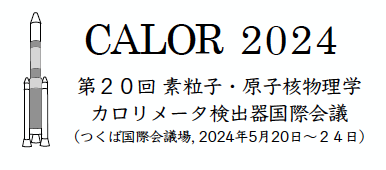Speaker
Description
As an upgrade of the ALICE experiment at the LHC, the Forward Calorimeter (FoCal) with a unique capability to measure direct photon production at the forward rapidity has reached the final stage of the development. FoCal consists of the Si+W electromagnetic calorimeter with longitudinal segmentation (FoCal-E) and Cu+Scintilation-fiber hadronic calorimeter (FoCal-H), and each FoCal-E module has 20 low-granularity layers with silicon pad sensors and 2 high-granularity layers with silicon pixel sensors. 22 FoCal-E modules for covering the pseudo-rapidity of 3.2 < η < 5.8 will be installed at a place of 7 meters seen from the interaction point during Long-Shutdown 3 and the data taking will start in the period of 2029-2032. We developed the FoCal-E pad module prototype and put it to some beam tests at the ELPH and CERN PS/SPS complexes. We also carried out the irradiation tests of the silicon pad sensors at Riken RANS equipment including some electronic components because it is important to estimate a change of characteristics of the sensors in long-term operation in the ALICE cavern. Sensors got the 1MeV neutron beam up to 6 x 10^13 neutron equivalent / cm^2 at the maximum in two days, and we continuously measured the I-V characteristics of the irradiated sensors for two months. In this talk, we would like to report the test beam results of the FoCal-E pad module prototype and irradiation test results of the silicon pad sensors including the MIP measurement, the temperature dependence and bias voltage dependence.
